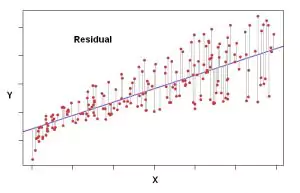In statistics, the concept of “p-hat” plays a crucial role in estimating population parameters based on a sample. It is denoted by the symbol p̂ and represents an estimate of the true probability (p) of an event occurring or a parameter being true for a given population. This guide aims to provide a comprehensive understanding of p-hat, its calculation, significance in statistical inference, and its applications in various fields.

✅ AI Essay Writer ✅ AI Detector ✅ Plagchecker ✅ Paraphraser
✅ Summarizer ✅ Citation Generator
Understanding P-hat and Sampling
What is Sampling?
Before delving into p-hat, it’s essential to grasp the concept of sampling. In statistics, sampling refers to the process of selecting a subset of individuals or elements from a larger population. The goal of sampling is to obtain representative data that can be used to draw conclusions about the entire population. Understanding this concept can be complex, leading some students to seek experts who can “do my statistics homework for money,” as they help with breaking down such intricate topics.
Calculation of P-hat
To calculate p-hat, two pieces of information are required: the sample size (n) and the number of occurrences of the event or parameter of interest (X) within the sample. The formula for p-hat is simple: p̂ = X/n. In other words, p-hat is obtained by dividing the number of occurrences by the sample size.
For example, suppose a political poll seeks to determine the proportion of Americans who agree with a particular policy. The pollsters contact 1,000 voters and ask the question. If they receive 175 “yes” answers and 825 “no” answers, the p-hat for the poll would be calculated as 175/1,000 = 0.175. To express this as a percentage, it would be 0.175 x 100 = 17.5 percent.
Significance of P-hat in Statistical Inference
While p-hat provides an estimate of the true population proportion, the value of p itself remains unknown. Therefore, the confidence level associated with p-hat becomes crucial. Confidence level refers to the degree of trust or reliability one can place in p-hat as an accurate representation of p.
The reliability of p-hat depends on various factors, including the sample size and the randomness of the sample. Larger samples generally lead to more reliable estimates, as they provide a more comprehensive representation of the population. Random sampling, where every individual has an equal chance of being selected, helps reduce bias and improve the accuracy of p-hat.
Overcoming Challenges in Sampling
While statisticians strive to ensure random and representative samples, there are practical challenges that can affect the accuracy of p-hat. One such challenge is non-response bias, where individuals decline to answer or remain undecided. The more respondents who decline to answer, the less meaningful the relationship between p-hat and p becomes. To mitigate this, surveys often employ simple yes or no questions to encourage participation.
Another challenge arises from skewed samples. Skewing occurs when certain groups are overrepresented or underrepresented in the sample, leading to biased estimates. To counter skewing, larger samples or multiple polls conducted in different parts of the country can be employed to achieve a more balanced representation.
Applications of P-hat
Political Polls
One prominent application of p-hat is in political polls. Pollsters use p-hat to estimate the proportion of the population that agrees with a particular policy or approves of a government official’s performance. These polls help gauge public opinion, inform political strategies, and guide decision-making processes.
Quality Control
P-hat also finds applications in quality control processes. For instance, in manufacturing, p-hat can be used to estimate the proportion of defective items in a production batch. By inspecting a sample from the batch and calculating p-hat, manufacturers can make informed decisions about the quality of the entire batch.
Market Research
In market research, p-hat plays a vital role in estimating consumer preferences, market trends, and purchase behavior. By surveying a representative sample of consumers, researchers can use p-hat to estimate the proportion of the target population that exhibits specific preferences or behaviors. This information helps businesses make strategic decisions regarding product development, marketing campaigns, and target audience selection.
Conclusion
In statistics, p-hat serves as an essential tool for estimating population parameters based on sample data. By calculating p-hat, statisticians can provide valuable insights into various fields, including politics, manufacturing, and market research. However, it is crucial to consider the sample size, randomness of the sample, and potential biases to ensure the reliability of p-hat. Understanding the significance of p-hat allows researchers and decision-makers to make informed choices based on representative data and statistical inference.
FAQ
How does the sample size affect the accuracy of P-hat?
The sample size has a direct impact on the accuracy of p-hat. In general, larger sample sizes tend to provide more accurate estimates of the true population proportion. With a larger sample, the estimate of p-hat is likely to be closer to the actual population proportion, reducing the margin of error and increasing the confidence in the estimate. Smaller samples, on the other hand, may lead to higher variability and less precise estimates.
What are the limitations of using P-hat in statistical inference?
While p-hat is a useful estimate, it has certain limitations. First, p-hat provides an estimate of the population proportion based on a sample, but it does not provide information about the variability of the estimate. Additionally, p-hat assumes that the sample is representative of the population, which may not always be the case due to sampling bias or non-response bias. Moreover, p-hat does not account for other potential sources of error or confounding factors that may affect the estimate.
Are there alternative methods to estimate P-hat in surveys?
Yes, there are alternative methods to estimate p-hat in surveys. One common method is using stratified sampling, where the population is divided into subgroups (strata), and samples are independently selected from each stratum. This approach ensures that each subgroup is represented in the sample proportionally to its size in the population. Another method is cluster sampling, where the population is divided into clusters, and a random selection of clusters is made. Within the selected clusters, all individuals are included in the sample. These methods provide alternative ways to estimate p-hat while addressing specific sampling considerations.
How is P-hat interpreted in political polls?
In political polls, p-hat is used to estimate the proportion of the population that agrees with a particular policy or approves of a government official’s performance. The interpretation of p-hat involves understanding it as an estimate of the true population proportion based on the sample data. For example, if a political poll reports a p-hat of 0.40 for a certain policy, it implies that approximately 40% of the population supports that policy. However, it’s important to consider the margin of error and the confidence level associated with p-hat to determine the range within which the true population proportion is likely to fall.
What is the relationship between P-hat and confidence intervals?
Confidence intervals provide a range of values within which the true population proportion is estimated to lie. The calculation of a confidence interval involves using p-hat as the point estimate and taking into account the variability of the estimate and the desired level of confidence. A wider confidence interval indicates more uncertainty about the true population proportion, while a narrower interval suggests greater precision in the estimate. Therefore, p-hat serves as the central value around which the confidence interval is constructed, providing a measure of the estimate’s precision and the range of plausible values for the population proportion.
Follow us on Reddit for more insights and updates.





Comments (0)
Welcome to A*Help comments!
We’re all about debate and discussion at A*Help.
We value the diverse opinions of users, so you may find points of view that you don’t agree with. And that’s cool. However, there are certain things we’re not OK with: attempts to manipulate our data in any way, for example, or the posting of discriminative, offensive, hateful, or disparaging material.